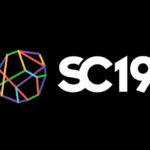Three Things to Know About the Connected Factory Exchange
The Connected Factory Exchange (IPC-CFX) is a new IoT standard that guides Industry 4.0 applications.

As Industry 4.0 comes into widespread use, the global trade association IPC saw a need to develop a standard to guide applications that operate within these connected and automated smart factory systems. The new Connected Factory Exchange, or IPC-CFX, is a global standard that simplifies and standardizes machine-to-machine and machine-to-manufacturing-execution-systems communications and facilitates machine-to-business solutions. IPC-CFX enables equipment on factory floors to communicate with each other to achieve enhanced efficiency and provides greater visibility and lower costs across the line. It was developed by a task group called the Connected Factory Initiative, which is comprised of manufacturers, software companies, and hardware suppliers, including TE Connectivity, Keysight Technologies, and Fuji. Here’s what you need to know.
All Smart Factory Processes are Covered
IPC-CFX connects manual, semi-manual, and automated processes that are part of Industry 4.0 systems. In doing so, it helps streamline processes, improve efficiencies, and reduce waste in production lines. Benefits include product tracking, material traceability, and asset utilization. The standard monitors events along the production process, including materials events, production, events, sensor/scanning events, and work order and operator events to provide a complete and detailed picture of every step of the process, from design to product shipping.
It’s Free and Open Source
The standard is free and open source, using a software developer toolkit. CFX doesn’t depend on any third-party software or licensing, but it can be used within the Microsoft Visual Studio and is available as a NuJet package. Class/object representations of all connected factory images are provided and CFX messages can be serialized to or from the JavaScript Object Notation (JSON) format for encoding to ensure data security.
IPC-CFX Does Not Replace the Hermes Standard
In 2018, the Hermes Standard became the globally accepted standard for machine-to-machine communication in surface mount technology (SMT) lines. It is an open standard based on TCP/IP and XML and addresses the handover of PCBs along mixed vendor surface mount assembly in smart factories. Hermes replaced the earlier Surface Mount Equipment Manufacturers Association (SMEMA) Standard, IPC-SMEMA-9851, and includes SMEMA’s guidance on board handover but expands to also address a range of requirements relevant to next-generation applications. The Hermes and IPC-CFX standards work together to manage the entire production line.
Like this article? Check out our other Standards and Industrial articles, our 2019 Article Archive, and our Industrial Market Page.
- Meet the Connector: DIN Standard Connectors - April 16, 2024
- Software-Driven Radio Reinvigorates Old Technology - April 9, 2024
- What is a Busbar? - April 2, 2024





